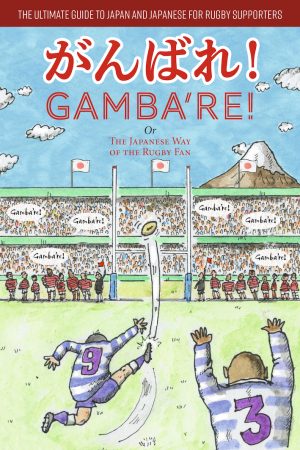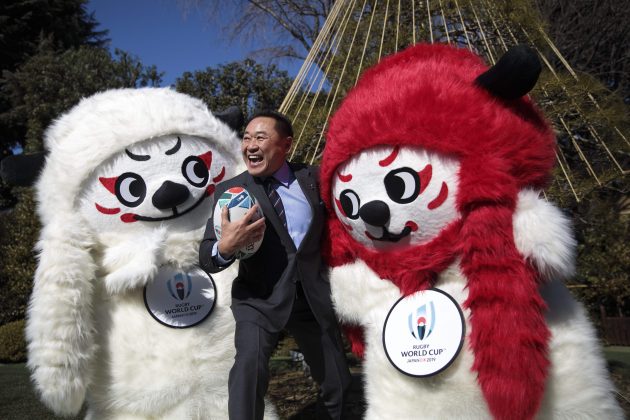Gamba’re! A guide book for rugby fans going to the World Cup in Japan
More than 600,000 overseas fans are expected to visit Japan during the World Cup and most will be encountering a language and culture of which they have little understanding. Angus Turvill, an award-winning translator, and Etsuko Okahisa, a university teaching colleague, have sought to address that with their ingenious guide for English-speaking visitors.
Called Gamba’re! – which means ‘come on!’ – the portable guide provides information about the host venues and cities, tips on etiquette and, most challengingly, attempts to teach the rudiments of the Japanese language.
For those of you with a knack for foreign tongues, it’s entirely possible you will take several strides down the route of learning Japanese. The book is well thought out and we particularly like the illustrations used for numbers. One is ichi, pronounced ‘itchy’, so there’s a picture of someone itching. Two is ni, pronounced ‘knee’, hence a picture of a knee. And so on.
For numbers 11-19, you merely add the word for ten (jū) in front, thus jū-ichi is 11.

Big numbers: England fans are expected to account for 24% of the overseas visitors heading to Japan 2019
Much of it is logical but of course in reality it’s far more complex than that – there are three types of script, including thousands of Kanji characters – and for many the value of the language sections will be learning the simple phrases needed for everyday use.
Kon’nichi-wa (good day), arigatō (thank you) and the multi-purpose sumima’sen (excuse me, sorry, thank you, etc) will take you a long way, and X ni ikita’i desu (I want to go to X) should be gold dust – providing you can understand enough of the answer!

A grainy day: why not try a sand bath on Beppu Beach
The key point really is making an effort. As co-author Okahisa says: “The people you meet will be very happy if you try to speak some Japanese.”
The tips on etiquette for visitors are also most valuable. Eating or drinking whilst walking down the street is frowned upon but lifting a bowl or plate towards your mouth in a restaurant, or making a slurping sound when eating noodles, is fine.
If you go to an izakaya (Japanese pub), you will often be given an appetizer which you’ll be charged for whether you eat it or not – it’s a kind of cover charge. Drinking expressions haven’t been forgotten – chant ikki, ikki! if someone is downing a drink in one!
Taxi drivers and restaurant staff don’t expect to be tipped and, contrary to what you might expect, Japan is still primarily a cash society and a lot of ATMs don’t accept foreign cards.
Visitors are advised to carry a handkerchief because often toilets don’t have hand-drying facilities and as for when to take your shoes off indoors, there’s almost a whole page on that.
Naturally, the authors have provided masses of information on what to see and do in the vicinity of the match venues, including the various travel cards available.

Two to watch: New Zealand and Ireland are among the favourites for the tournament (Getty Images)
And there’s also a bit of history about rugby in Japan, which saw the sport first played there in 1866 in Yokohama.
We were fascinated to discover that the original rugby shirts of the national team had two open flowers and one bud. The intention was to keep the third bud until Japan played England, that being where rugby originated. In the event, the third blossom appeared when Japan played Oxford University in 1952.
Related content: Japan give England a scare in 2018 autumn series

In blossom: the flowers of the Japan rugby crest have an interesting history (Sportsfile/Getty Images)
The book, which includes an appendix of general vocab and phrases, has a gentle underlying humour to it. For example, get the Japanese for “It’s a try!” slightly wrong and you could end up saying “It’s a tiger!” The reader is regularly advised to refer to what the authors call the Vowel Haka for a guide to pronunciation (the word for hooker is fukkā…)

Turvill and Okahisa, supported by renowned illustrator Harry Venning, have done an excellent job and the specificity of the subject – Japanese knowledge for rugby fans – means anyone intending to head to the tournament in the autumn would be wise to snap up a copy of Gamba’re!

Brighton rocks: Japan players celebrate beating South Africa on the Sussex coast at RWC 2015 (Getty)





